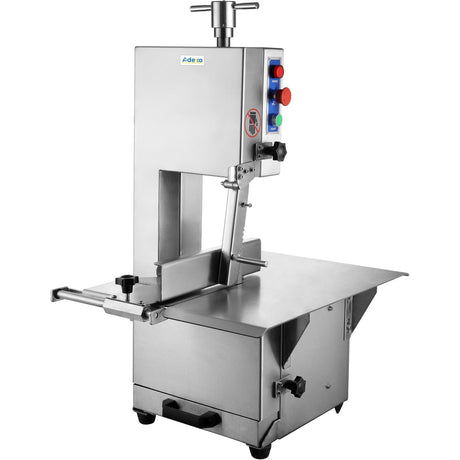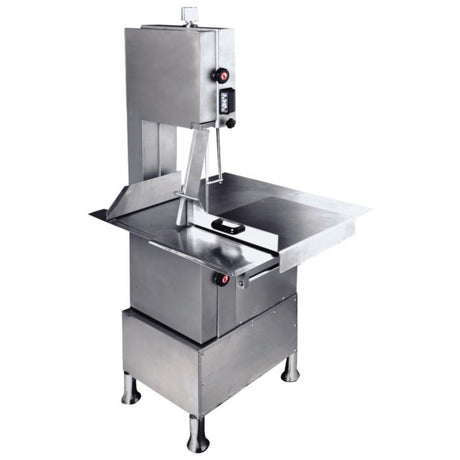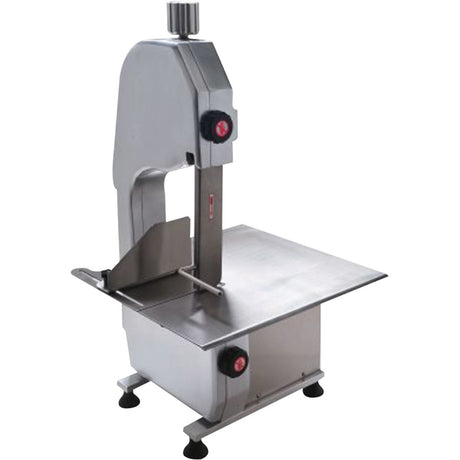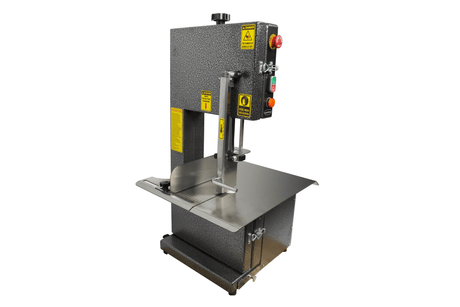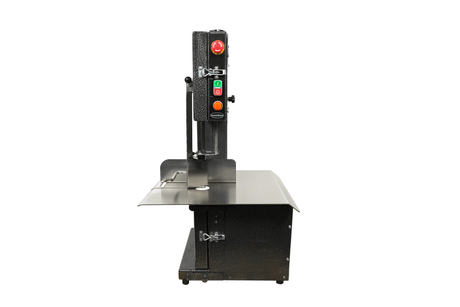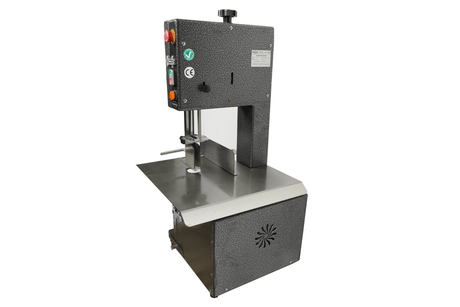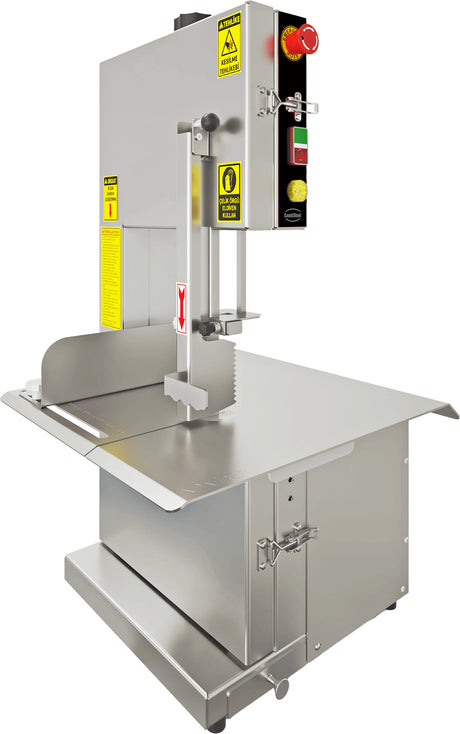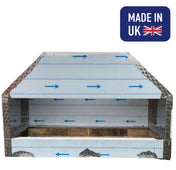Black Friday
Black Friday Special: Enjoy an extra 10% off this product. Applied automatically at checkout.
Auto-applied discount at checkout – no extra steps!
UK CATERING
Industrial Bone Saw 2020mm Stainless Steel | Hls2020
Very low stock (4 units)Sale price £1,428.95 Regular price £2,088.10Unit price /UnavailableUK CATERING
Industrial Bone Saw 1650mm Stainless Steel | Qjhw210 Ca
Sale price £535.95 Regular price £782.80Unit price /UnavailableSammic
Low stock (15 units)Regular price £4,066.00Unit price /UnavailableSammic
Low stock (15 units)Regular price £3,421.00Unit price /UnavailableUK CATERING
Industrial Bone Saw 1650mm Stainless Steel | Jg210 C
Sale price £514.95 Regular price £766.00Unit price /UnavailableUK CATERING
Professional Bone Saw 1650mm Stainless Steel | Qjhw210 A
Sale price £828.95 Regular price £1,598.00Unit price /UnavailableUK CATERING
Industrial Bone Saw 2400mm Stainless Steel | Hls2400
Very low stock (2 units)Sale price £1,870.95 Regular price £3,670.00Unit price /UnavailableUK CATERING
Professional Bone Saw 1650mm Stainless Steel | Hls1650
Low stock (12 units)Sale price £596.95 Regular price £1,296.00Unit price /UnavailableUK CATERING
Professional Bone Saw 1650mm Anodized Aluminium | Hls1650 A
Low stock (11 units)Sale price £547.95 Regular price £1,278.00Unit price /Unavailable- £47.00 offNew arrival
Combisteel
Very low stock (1 unit)Sale price £1,390.90 Regular price £1,437.90Unit price /Unavailable Combisteel
Combisteel Bone Saw 400 V Ss Body
Very low stock (4 units)Sale price £1,798.90 Regular price £1,859.90Unit price /Unavailable
Bone Saws: Essential Tools for Precision Cutting
Bone saws are key tools in both medical and culinary fields. They are known for their precision and versatility. This article will explore their purpose, design, and types. We'll see how they play a crucial role in healthcare and beyond.
Bone saws are made to cut through hard materials like bone with great accuracy. They are vital for surgeons in orthopedic surgeries and for chefs in carving bone-in dishes. These tools help achieve the precision needed in their fields.
What Are Bone Saws?
Bone saws are special tools for cutting through hard materials like bones and cartilage. They have a sharp, fine-toothed blade for precise cuts. This makes them key in orthopedic surgeries and some cooking tasks with bones.
Exploring the Purpose and Design
Bone saws help doctors cut bones during surgeries like amputations and joint replacements. Their sharp, serrated blades allow for clean cuts through tough bones.
They also have uses in cooking, helping to cut through animal bones for processing. The bone saw design and purpose make these tools essential in healthcare and food industries.
Types of Bone Saws
Bone saws come in many designs, each for different needs. They range from manual hand saws to specialized surgical bone saws. Each tool has its own features and uses.
-
Oscillating Bone Saws: Known for their high-speed, back-and-forth motion, often used in orthopedic surgeries for precise cuts.
-
Hand Bone Saws: Manual and rely on the user's skill and strength. They are small and light, making them great for delicate work.
-
Specialized Surgical Bone Saws: Designed for specific medical tasks with unique blades, power sources, or handles for better performance and comfort.
All bone saws aim to provide the precision and control needed for safe bone cutting. Knowing the differences between each type helps professionals choose the right tool for their work.
Bone Saws: Crucial Tools in Surgery
Bone saws are key in many surgeries, especially in orthopedics and trauma care. Surgeons use them for tasks like amputations, joint replacements, and fixing fractures. They need to make clean cuts through bone for the best results.
Orthopedic and Trauma Procedures
In orthopedic surgery, bone saws are vital for joint replacements, bone grafting, and osteotomies. They help surgeons remove or reshape bone accurately. This ensures prosthetic implants fit right and bones are aligned properly.
In trauma cases, bone saws are essential for fixing complex fractures. They allow surgeons to make precise cuts, aiding in aligning and fixing broken bones correctly.
Bone saws give surgeons the control and precision needed for complex surgeries. This leads to better patient outcomes and faster recovery times.
Selecting the Right Bone Saw
Choosing the right bone saw involves several important factors. These include the specific task, the type of bone or material, and the level of precision needed.
Factors to Consider
-
Blade Size: Larger blades work well for thicker bones, while smaller ones are better for precise cuts.
-
Blade Material: High-quality stainless steel improves performance and durability.
-
Handle Design: Ergonomic handles make the saw easier to hold and use, improving control and safety.
-
Power Source: Manual or electric power affects the saw's speed and force.
When picking a bone saw, it's important to look at these features to match the needs of the task. By considering these factors, professionals can make the best choice for their needs.
Proper Maintenance for Optimal Performance
To keep bone saws working well, regular care is key. Cleaning, sterilizing, and checking the blade are essential steps that help extend the life of these vital tools.
Proper Bone Saw Maintenance Includes:
-
Regularly clean and sterilize the blade to prevent debris buildup and ensure a hygienic cutting surface.
-
Inspect the blade for any signs of damage or wear, such as nicks, cracks, or dullness, and replace if necessary.
-
Properly store the bone saw when not in use, keeping it in a clean, dry environment to protect it.
By following these simple maintenance practices, healthcare providers can extend the lifespan of their bone saws, ensuring optimal performance and efficiency.
Bone Saws in Veterinary Medicine
Bone saws are key in both human and animal medicine. In veterinary care, they help with surgeries like fixing bones and amputations, providing precise cuts that are crucial for animal health.
Surgical Procedures Requiring Veterinary Bone Saws
-
Orthopedic Repairs: For fracture fixation and joint replacement.
-
Amputations: Including limb or digit removal.
-
Bone Biopsies and Tumor Removal
-
Corrective Procedures: For skeletal deformities.
-
Spinal Surgeries: Including laminectomy and vertebral stabilization.
Bone saws are essential for many types of veterinary surgeries, ensuring animals receive the best care and have a good recovery.
Safety Precautions for Bone Saw Usage
Bone saws are key in the medical world but come with risks. It's vital to follow safety measures to protect both patients and workers.
Protecting Healthcare Professionals
Wearing the right gear is essential when using bone saws. This includes safety glasses, face shields, gloves, and protective clothing. Proper handling techniques, like steadying the saw and keeping it away from the body, are also crucial.
Proper training is essential for bone saw safety, covering operation, maintenance, and safe handling.
By focusing on bone saw safety, medical environments can minimize risks and ensure the best care for patients.
Bone Saws: Advancing Precision and Care
Bone saw technology is advancing, making procedures more precise, safe, and effective. These tools are becoming better suited for the demands of both doctors and chefs.
Innovations in Bone Saw Technology
Manufacturers are constantly improving bone saw design, incorporating ergonomic handles and new blade shapes. These improvements make bone saws more efficient and easier to use.
With continued advancements, bone saws will allow for greater precision and control, helping to achieve improved outcomes in both medical and culinary applications.
FAQ
What are bone saws used for?
Bone saws are special tools for cutting through hard materials like bone. They are used in medical and culinary fields. In medicine, they help with surgeries and amputations. In cooking, they're used for cutting through bones.
What are the different types of bone saws?
There are many types of bone saws. You have manual hand saws, powered oscillating saws, and surgical saws. Each type is made for different needs and offers special features.
How do bone saws play a critical role in surgery?
Bone saws are key in surgeries, especially in orthopedics and trauma care. Surgeons use them for amputations, joint replacements, and fixing fractures. They make it possible to cut through bone cleanly and safely.
What factors should be considered when selecting a bone saw?
When picking a bone saw, think about what you need it for. Consider the bone type, precision level, and your comfort. Blade size, handle design, and power source matter too.
How can bone saws be properly maintained for optimal performance?
To keep bone saws working well, clean and sterilize them often. Check for damage and store them properly when not in use. With the right care, they'll keep making precise cuts.
How are bone saws used in veterinary medicine?
Bone saws are vital in veterinary medicine too. Veterinarians use them for surgeries on animals, like orthopedic repairs and amputations. Their precise cuts are crucial for animal care.
What safety precautions should be taken when using bone saws?
Bone saws can be risky, especially in medical settings. Always follow safety rules. Use protective gear, handle them carefully, and get proper training.
How are bone saws advancing in terms of precision and care?
Bone saw technology is getting better, making them safer and more precise. New blade designs and power sources are improving their performance. This helps in both medical and culinary fields, leading to better results.






